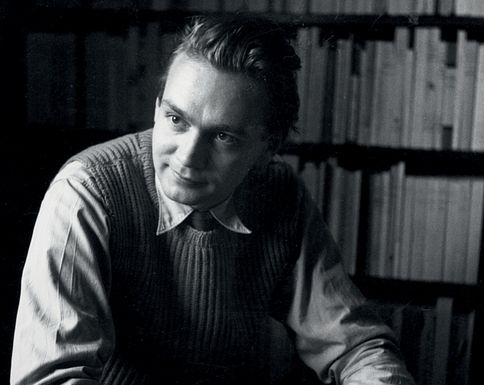Since his early works, Stig Dagerman has had great success with his magazine articles, his novels – The snake (1945), The Island of the Condemned (1947), The burned child (1948), Marriage problems (1949) – like his essays – German autumn (1947), Our need for consolation is impossible to satisfy (1949). So much so that his fervent readers wonder why, at the end of this decade that made him a recognized writer, he committed suicide in 1954 at the age of 31.
Born into a poor family in rural Sweden, abandoned by his mother shortly after birth and raised by his grandparents, Stig Dagerman left at the age of eleven to live in Stockholm with his factory worker father. In his first letters, everyday problems increasingly gave way to concern for the fragility of Europe.
Discovering that during the war in a neutral Sweden, in reality compliant with Hitlerism, there were still pro-Nazi intellectuals, he felt disgust and dismay at the laxity of literary circles. And, like the writers of Group 47 – Ingeborg Bachmann, Heinrich Böll, Paul Celan – he questions the possibilities and challenges of literature after the Shoah.
Confidences through the evocation of his travels and his novels
Nazism had forced Annemarie Götze, his future wife, to flee Germany as a child with her father, an anarchist activist. Stig Dagerman recounts his journey in 1947 to the town of Annemarie, defeated and collapsed, in German autumn and in his letters where, overwhelmed by ruins, famine, poverty, he cannot bear the idea of getting used to it. Upon his return, he found Sweden “intact, radiant and satisfied”, already attempted by consumer society. And consumerism that doesn’t improve much “the poor of history” it makes him sink into even deeper anguish at the sight of Europe once again divided by the Cold War.
Dagerman’s confidences emerge in one sentence, in an evocation of his many travels that can excite him – such as his visit to Rome’s St. Peter’s Basilica, which he calls “God’s Versailles” –, but they often disappoint him, or in the presentation of his novels. In a 1948 letter to Svanström, regarding The burned child Who ” It’s about love and heartbreak in a working-class family.” writes: “CThe essential always remains the nakedness of the soul. » The following year, again in Svanström, approxMarriage problemsdefines ” the two most important questions in life: who knows where my suffering lies? And where is this friend that I look for everywhere? “.
Two years before his death, a Our need for consolation is impossible to satisfy, In this very short testamentary essay, Stig Dagerman delivers some confidences about his inner journey, where, for him who has not received any inheritance, he is obliged to see life” like a wandering towards certain death”, everything looks like a duel. On October 20, 1954, he confided to a friend: “ I am part of that family of suicides who always have death at their side for safety reasons… Divine love? This is undoubtedly what should make us free…”
